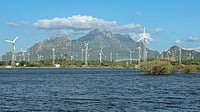Soil moisture depletion has resulted in a 10.78 millimetre rise in global mean sea level (GMSL) between 1979 and 2016 equivalent to a loss of 3,941 gigatonnes (Gt) of water from land, according DownToEarth.
The study also stated that this depletion has been irreversible since 2003 and has only intensified. This has resulted in an additional 2.76 mm increase in GMSL, corresponding to 1009 Gt of lost land water.
Why Soil Moisture Loss Matters
Commenting on the impact of soil “increasing the severity and frequency” of major droughts on human, ecosystems and agriculture, Benjamin Cook, an Earth system scientist at the National Aeronautics and Space Administration’s Goddard Institute for Space Studies and Columbia University, told Carbon Brief, “Droughts are one of the most impactful, expensive natural hazards out there, because they are typically persistent and long lasting. Everything needs water – ecosystems need water, agriculture needs water. People need water. If you don’t have enough water – you’re in trouble.”
Milind Mujumdar, retired senior scientist at the Indian Institute of Tropical Meteorology, told DownToEarth that changing monsoon patterns, droughts and floods impact soil moisture, weather, crop yields and groundwater recharge.
He emphasised the need for accurate soil moisture data at surface and sub-surface levels to improve climate models, agricultural plans and hydro-meteorological monitoring. However, because of limited on-ground observations, few studies show its impact on climate.
Mujumdar added that his team’s studies show surface soil moisture significantly affects temperature rise in north-central India. He also noted that groundwater decline is influenced by soil moisture levels, precipitation, agricultural practices and urbanisation.































